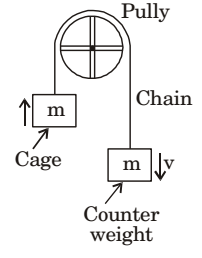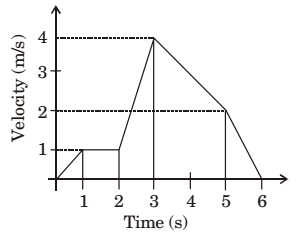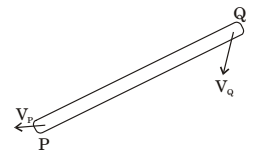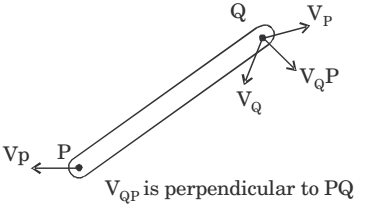Engineering Mechanics Miscellaneous
- A spring scale indicates a tension T in the right hand cable of the pulley system shown in Neglecting the mass of the pulleys and ignoring friction between the cable and pulley the mass m is

-
View Hint View Answer Discuss in Forum

∑ FV = 0
4T = mgor m = 4T g Correct Option: C

∑ FV = 0
4T = mgor m = 4T g
- An elevator (lift) consists of the elevator cage and a counter weight, of mass m Chain each. The cage and the counter weight are connected by chain that passes over a Cage pulley. The pulley is coupled Counter weight to a motor. It is desired that the elevator should have a maximum stopping time of seconds from a peak speed v. If the inertias of the pulley and the chain are neglected, the minimum power that the motor must have is

-
View Hint View Answer Discuss in Forum
Power = dW / dt (rate of doing work or rate of change of K.E. energy of the system)
Initial Kinetic energy of the system= 1 = mv² + 1 mv² = mv² 2 2
Final Kinetic energy = 0
Time duration it occurs = t⇒ Power = mv² t
Correct Option: C
Power = dW / dt (rate of doing work or rate of change of K.E. energy of the system)
Initial Kinetic energy of the system= 1 = mv² + 1 mv² = mv² 2 2
Final Kinetic energy = 0
Time duration it occurs = t⇒ Power = mv² t
- A point mass is shot vertically up from ground level with a velocity of 4 m/s at time, t = 0. It loses 20% of its impact velocity after each collision with the ground. Assuming that the acceleration due to gravity is 10 m/s2 and that air resistance is negligible, the mass stops bouncing and comes to complete rest on the ground after a total time (in seconds) of
-
View Hint View Answer Discuss in Forum

(1) → t =?
v = u + at
0 = 4 – 10tt = 4 = 0.4s 10
(2) → t' =?
u' = 0.8 × u = 0.8 × 4 = 3.2 m/s
v' = u' + at'
0 = 3.2 – 10t't' = 3.2 = 0.32s 10
(3) → t'' =?
u'' = 0.8 u' = 0.8 × 3.2 = 2.56 m/s
v'' = u'' + at''
0 = 2.56 – 10t''
t'' = 0.256s
So, t, t', t'' are forming a GP series
So, total time = 2(t + t' + t'' +.... 0)
= 2[0.4 + 0.32 + 0.256 + ....0] = 2 × 2 = 4 secondsCorrect Option: C

(1) → t =?
v = u + at
0 = 4 – 10tt = 4 = 0.4s 10
(2) → t' =?
u' = 0.8 × u = 0.8 × 4 = 3.2 m/s
v' = u' + at'
0 = 3.2 – 10t't' = 3.2 = 0.32s 10
(3) → t'' =?
u'' = 0.8 u' = 0.8 × 3.2 = 2.56 m/s
v'' = u'' + at''
0 = 2.56 – 10t''
t'' = 0.256s
So, t, t', t'' are forming a GP series
So, total time = 2(t + t' + t'' +.... 0)
= 2[0.4 + 0.32 + 0.256 + ....0] = 2 × 2 = 4 seconds
- The following figure shows the velocity time plot for a particle traveling along a straight line. The distance covered by the particle from t = 0 to t = 5s is _______m.

-
View Hint View Answer Discuss in Forum
Distance = Velocity × Time
Distance from t = 0 to t = 5s
= Area under the curve from t = 0 to t = 5= 1 × 1 × 1 + 1 × 1 + 1 × 1 × 3 + 1 × 1 + 1 × 2 × 2 + 2 × 2 2 2 2 = 1 + 1 + 3 + 1 + 2 + 4 = 4 + 2 + 1 + 1 + 2 = 10 2 2 1
Correct Option: A
Distance = Velocity × Time
Distance from t = 0 to t = 5s
= Area under the curve from t = 0 to t = 5= 1 × 1 × 1 + 1 × 1 + 1 × 1 × 3 + 1 × 1 + 1 × 2 × 2 + 2 × 2 2 2 2 = 1 + 1 + 3 + 1 + 2 + 4 = 4 + 2 + 1 + 1 + 2 = 10 2 2 1
- A rigid link PQ is undergoing plane motion as shown in the figure (VP and VQ are non-zero). VQP is the relative velocity of point Q with respect to point P.

Which one of the following is TRUE?
-
View Hint View Answer Discuss in Forum

Correct Option: D


